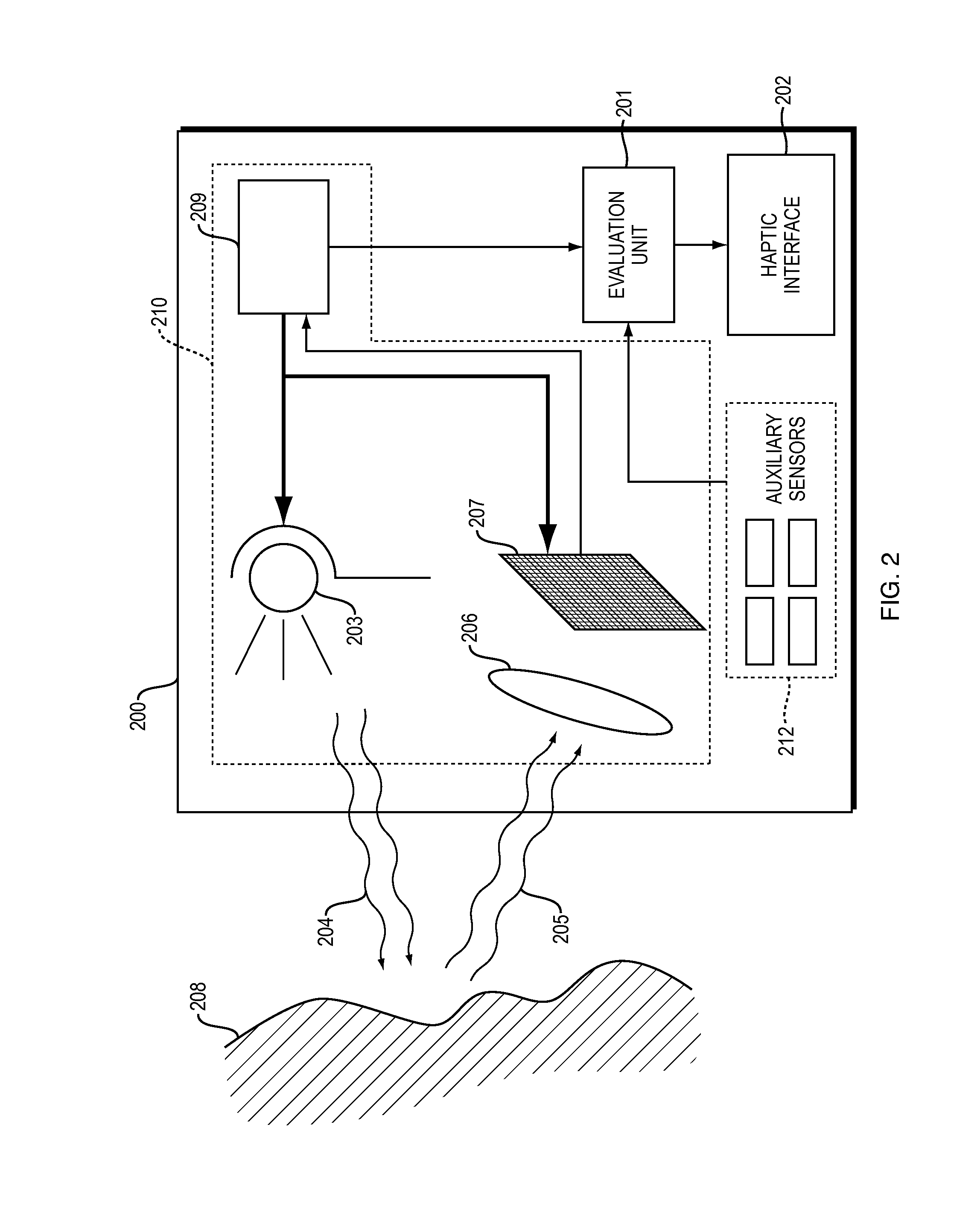White cane with integrated electronic travel aid using 3D TOF sensor
a technology of electronic travel aid and white cane, which is applied in the direction of walking sticks, distance measurement, instruments, etc., can solve the problems of inability to combine the functionality of a white cane with an eta device, limited spatial and/or depth information provided by older embodiments, etc., and achieve the effect of better exploring the environmen
- Summary
- Abstract
- Description
- Claims
- Application Information
AI Technical Summary
Benefits of technology
Problems solved by technology
Method used
Image
Examples
Embodiment Construction
[0031]The present invention features a white cane with an electronic travel aid (ETA). The ETA includes a modulated light-based, time-of-flight (TOF) sensor, an evaluation unit and a haptic interface. The depth measurements from the TOF sensor are evaluated by the evaluation unit, which controls the haptic interface to the user. The haptic feedback from the haptic interface is designed such that the user receives the most valuable information out of the data acquired by the TOF sensor. The most valuable information might be a depth profile of the environment, information regarding the closest object, or more sophisticated data such as stairs, doors, free passages, etc.
[0032]The use of the device is shown in FIG. 1. An ETA is mounted on cane handle 2 of a white cane 3. As a user 1 grips the cane handle, allowing the tip of the cane to rest on the ground, the ETA is positioned so that it detects the distance to objects within a field-of-view in front of the user. The ETA then transmit...
PUM
 Login to View More
Login to View More Abstract
Description
Claims
Application Information
 Login to View More
Login to View More - R&D
- Intellectual Property
- Life Sciences
- Materials
- Tech Scout
- Unparalleled Data Quality
- Higher Quality Content
- 60% Fewer Hallucinations
Browse by: Latest US Patents, China's latest patents, Technical Efficacy Thesaurus, Application Domain, Technology Topic, Popular Technical Reports.
© 2025 PatSnap. All rights reserved.Legal|Privacy policy|Modern Slavery Act Transparency Statement|Sitemap|About US| Contact US: help@patsnap.com



